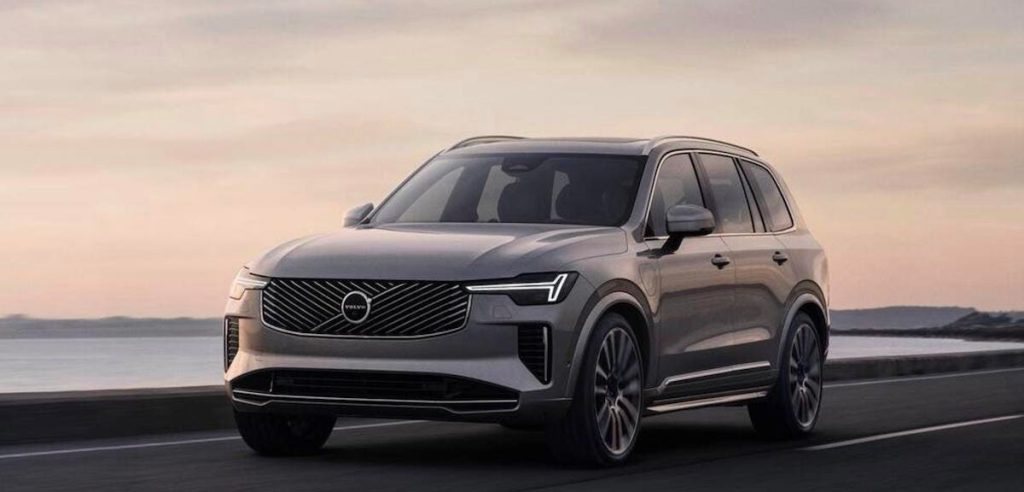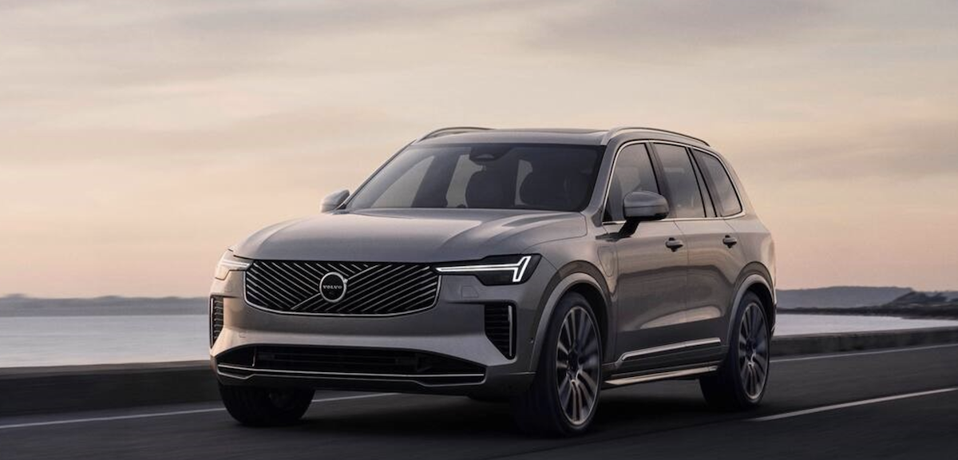Volvo
The Volvo XC90 three-row SUV is a popular luxury family pod, defined by elegant design, filled with luxe touches, imbued by the utmost in safety features and design. It’s long been a top-notch future-forward SUV and in recent years a leader in plug-in hybrid electric technology.
So when Volvo rolled out the 2025 Volvo EX90 electric three-row SUV, many expected a carbon copy of the Volvo XC90, which was just updated for the 2025.5 model with its iconic Swedish design, large multimedia screen and seating for six or seven.
And while in general, it’s true that these two cars draw from the same DNA, the real story differs quite a bit in the details.
Scotty Reiss
The First Difference: Part Time Or Full Time Electric Driving
While Volvo offers two mild-hybrid gas-only versions of the XC90, the T8 PHEV and EX90 EVs are the most powerful, delivering 400 or more horsepower and the option of driving on all electric.
The XC90’s T8 powertrain is powered by a 4-cylinder turbo designed to boost both the power under foot as well as fuel economy. It delivers 455 hp and about 33 miles of electric driving before the gas-powered engine takes over; driving on the gas-only hybrid engine should yield 27 MPG.

Best High-Yield Savings Accounts Of 2024

Best 5% Interest Savings Accounts of 2024
The all-electric Volvo EX90, which delivers about 300 miles of range on a charge, is powered by a 111 kWh battery pack and dual motors that deliver all wheel drive and a choice of 402 or 510 hp.
Scotty Reiss
Old-School Details Define The Volvo XC90
While the Volvo XC90 is priced from about $58,000 for the smallest gas-powered engine, the PHEV is priced from $73,000 to about $81,000. The XC90 is known for woven or leather interiors with seating that looks more like a luxury lounge than a car.
And it features some classic details: A lever-style gear shifter that can be optioned with an Orrefors crystal shifter, a start/stop dial and a large digital driver display. The updated XC90 also maintains its iconic vertical tail lights that frame the tail gate.
Buyers can opt for features such as Nappa leather, a head up display, massaging seats and a choice of captains chairs or a bench seat in the second row.
Scotty Reiss
What Defines the Volvo EX90
Volvo approached the design of EX90, priced from $79,995 to $85,640, with a combination of classic details and modern ideas, amplifying the Scandinavian lounge idea for a more open-feeling cabin. A true floating center console, panoramic sunroof, minimalistic dashboard and renewable, sustainable materials define the interior.
Novel features include toggle-style window controls on the driver’s door and wood veneer used on the dash and door panels; the veneer looks light and textured in daylight, but at night it’s backlit for a glowy graphic look.
Probably the biggest detail that defines this car, though, is the lack of a starter button. To power up the EX90, simply sit in the driver’s seat with the key fob, key card or an enabled smart phone, press the brake and the car is powered. It will lock when you walk away with the key, too.
Scotty Reiss
Design Details That Both Models Share
In designing its electric models, Volvo looked to simplify functions, use sustainable materials and reduce the carbon footprint of each car built. Many of these solutions turned out to be a good fit for other models, starting with the XC90.
This includes Nordico leatherette, a leather-like material that Volvo sources from sustainable materials such as pine sap and recovered plastics. Designed to look and perform like leather, Volvo offers it in a variety of of color palettes and designs.
Both models also offer heated and vented massaging seats, a panoramic sunroof, captains chairs with arm rests and integrated cup holders (which are now again a detail on the 2025.5 XC90 after they were eliminated in earlier models), a woven fabric option for the dashboard and door panels, the same iconic seats and the large center touch screen.
Taking a nod from the EX90, the 2025.5 XC90 has a redesigned center console that is surrounded in leather to appear as if it’s floating, though it is solid. The console holds the stop/start dial, gear shifter and cup holders, as well as a wireless phone charge pad that is now tucked just between the dash and the console, reinforcing the idea of a floating console.
Scotty Reiss
Similar Silhouettes With Design Distinctions
On the outside, the XC90 and EX90 look very similar in size and scale, though at 198 inches, the EX90 is three inches longer than the XC90’s 195 inches. The XC90 carries the brand’s classic tail lights and an updated version of the Thor’s Hammer headlights. For 2025.5 the XC90 has a new front grille and sports the updated Volvo badge design.
The EX90 is defined by a body-colored front face with a smaller air intake panel and absence of a grille. While it also has Thor’s Hammer headlights, these are stacked blocks that create a digital pixel look rather than the LED lights on the XC90. The EX90 also has a distinct taillight design that transforms at night: its “C” frame lights pair with vertical lights along the tailgate to mimic the tail lights on the XC90.
The EX90 also features a tech module on the roof that houses sensors and radars that will power its level two hands-free driving system, expected to be available as an over the air update later in 2025.
Scotty Reiss
Both Share Volvo’s Great New Touch Screen System
Both the Volvo XC90 and EX90 feature Volvo’s newest multimedia system, an oversized touch screen system with built-in Google; the function is mostly identical in both cars, though the screen in the EX90 is larger at 14.5 inches vs. the 11.2 inch screen in the XC90.
The screen is divided into four sections: A large main screen displays the system in use, such as navigation or entertainment; below it, two screens feature current systems in use such as radio or phone; a narrow tool bar below it shows most recent apps used and below that bar is a fixed climate panel.
Many of the car’s functions are found on the screen, including driver’s side mirror settings, steering wheel settings and headlights.
The system also features Google voice assistance; just say “Hey Google” to ask for functions such as navigation, climate or a radio station without touching the screen or taking your eyes off the road.
Scotty Reiss
Great Seating For Six Or Seven Passengers
Another thing that doesn’t differ is the seating capacity in Volvo’s three-row SUVs. Both the XC90 and EX90 offer center row captains chairs or a center row bench with an integrated booster seat and a third row that seats two.
Center seats easily slide and tilt forward for third row access and two sets of lower anchors in the center row allow for attaching child car seats. The third row does take a bit more agility to reach and is best used by passengers who are 5’7” or shorter; with the center row seats fully pushed back, third row leg room is limited, though it’s more comfortable with captains chairs in the center row.
Both models are considered mid-sized SUVs, which is also part of their charm. The XC90 and EX90 are easy to drive, easy to park and easy to get in and out of. And with electric power, they are nicely peppy for a family-focused SUV. Both let you silently soar through traffic or along highways in modern elegance, with enough power under foot to let you forget you’re driving a three-row SUV.
Source: https://www.forbes.com/







More Stories
Africa’s Remote Príncipe Island Is Reinventing Soulful Luxury Travel
Why Donald Trump Will Be Good For Weed
Denmark’s Medical Cannabis Trial Program Set To Become Permanent